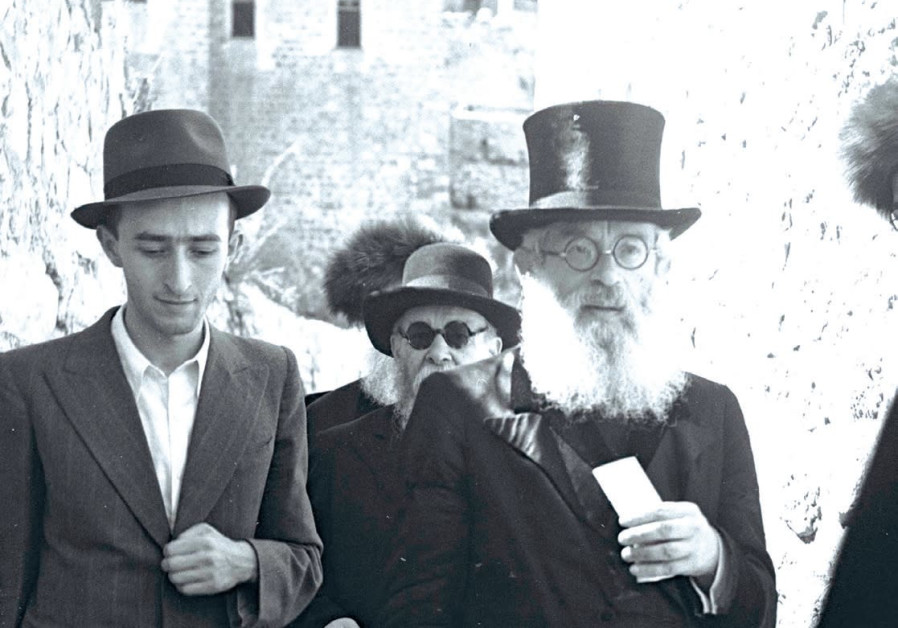
Anyone with an interest in modern Israeli history, Jewish heroes and/or the institution of the chief rabbinate will find The Rabbinate in Stormy Days of great value.The Herzog family is a three-generation “dynasty” in Israeli leadership circles. The patriarch of this accomplished clan was Rabbi Yitzhak (his grandson Isaac of the Labor Party is named after him) Halevi Herzog, born on Hanukka of 1888 in Lomzha, Poland. We learn in this impressive tome – put together by Shaul Mayzlish – that young Yitzhak was instilled with Zionist passion by his father, Rabbi Yoel Herzog, and displayed a “wondrous ability to synthesize religious and secular studies.”
The distinguished young scholar received rabbinic ordination in 1910 and then earned a master’s degree in Semitic and classic languages and a PhD in literature from the University of London.
At the Sorbonne, he did graduate studies on the biblical techelet dye, though this groundbreaking research wasn’t published until 1981. At 27, Herzog was appointed community rabbi of Belfast, Ireland. Two years later he married Sarah Hillman. In 1918, the year of his son Chaim’s birth, he became chief rabbi of Dublin and remained there for 18 years, turning down similar offers from the Jewish communities of Berlin, New York, Salonika and Vienna.
In 1935, Herzog, Sarah and Chaim accompanied Rabbi Yoel Herzog’s remains for burial in Jerusalem. Chaim stayed on to attend the Merkaz Harav Yeshiva (he later served as an IDF general, Israel’s ambassador to the United Nations and finally the Israeli president). The Dublin chief rabbi made a deep impression on the politicians and rabbis of the Yishuv, including Chief Rabbi Avraham Yitzhak Hakohen Kook, who died later that year. Herzog was then invited to run for election as the Ashkenazi chief rabbi.

Rabbi Isaac Halevi Herzog on a visit to Jerusalem’s Old City in 1945.. (photo credit:GPO)
The current state of sectoral squabbling is no worse than it was in the 1930s. The haredi rabbinic leadership opposed the “foreign” candidate and warned that the “rabbi doctor” was “liable to create a dangerous precedent and lead to an exodus from the yeshivas in favor of general sciences.” Herzog won the election and there was no exodus from the yeshivas. In fact, during a tenure lasting until his death in 1959, Herzog did much to strengthen the yeshiva world in Israel.
It is hard to imagine a more challenging era in which to serve as the leader of the Jewish homeland; hence the book’s title: The Rabbinate in Stormy Days: The Life and Teachings of Rabbi Yitzhak Isaac HaLevi Herzog, The First Chief Rabbi of Israel.
Almost from the moment he stepped off the boat in Haifa on January 14, 1937, with his top hat and walking stick, the good rabbi nearly drowned in a sea of crises, disasters and tragedies striking Jews in the Yishuv and in Europe. He expended superhuman effort, to the detriment of his health, mediating in difficult situations and knocking on the doors of world leaders who had the power, yet rarely the will, to help. As early as 1938 he was actively lobbying the British authorities for aliya certificates and as the danger grew, so did his high-level appeals. His fluent English was of inestimable assistance even if not all his efforts bore fruit.
After the war he spent six months in Europe assessing the needs of survivors and trying to rescue Jewish orphans from Christian families and institutions that had harbored them. The book has some heartbreaking photos from this time, including one that shows Herzog standing among the ruins of the Warsaw Ghetto.
Of course, when he returned to Israel there was no time to rest. There were Jewish prisoners to be redeemed from British captivity, traumatized refugees to be cared for and most importantly a nation to build.
On July 10, 1947, Herzog delivered a two-hour speech to the United Nations Special Committee on Palestine, which would formulate a recommendation concerning the future of the Holy Land. His moving rhetoric “left a great impression on the UNSCOP members” and was widely quoted in the press.
“You have before you a case for which there is no precedent,” he told them. “You are at this critical point to decide whether that great history of the people called Israel... shall lose itself in the gigantic ash-heaps, in the immense mass graves of six million Jews, including 1,200,000 babes and sucklings, or whether that history shall now bring issue in something great and noble, which will form part and parcel of a great divine plan in the history of mankind.”
Interestingly, Herzog believed that ideally the Jewish state ought to have its legal foundations in Torah law but saw this as a gradual process. He also stated his belief that residents of other faiths should enjoy full autonomy over their lives and holy places.
As the author states, Herzog “epitomized what the rabbinate should aspire to: he was the instructor of an entire nation, a full partner throughout the entire establishment of the State of Israel... [H]e strove to be intimately involved in all aspects of everyday life... Such an illustrious character... has not since inhabited the rabbinate.”
Anyone with an interest in modern Israeli history, Jewish heroes and/or the institution of the chief rabbinate will find The Rabbinate in Stormy Days of great value. I only question why it was formatted like a heavy coffee-table art book with thick paper and awkwardly wide 18.5-centimeter lines of type as opposed to the usual 10 or 11 cm. Perhaps this is meant to underscore the gravitas of the contents. In any case, it does contain numerous black-and-white images that help convey the character of the man who did his best to steer the ship of the Jewish state safely through turbulent waters.
No comments:
Post a Comment